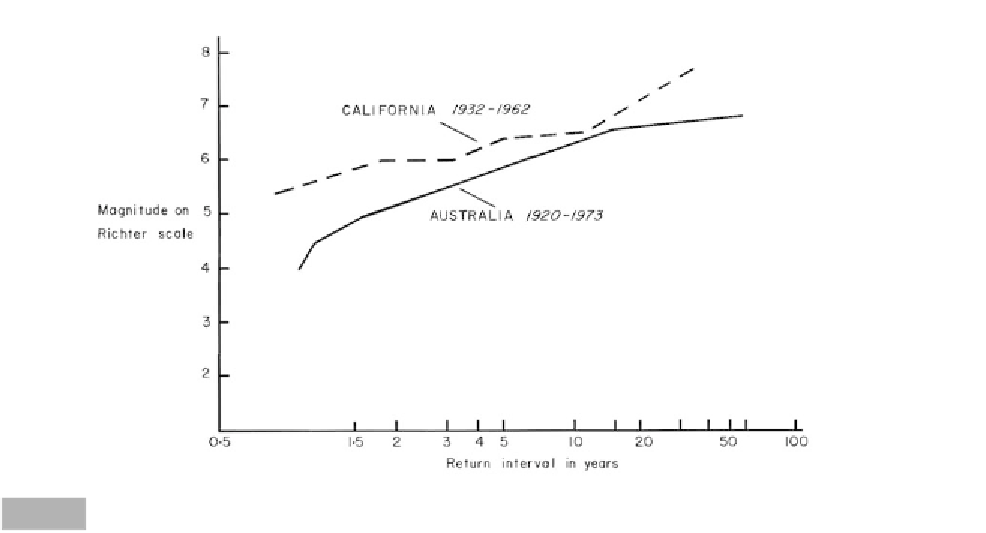Geoscience Reference
In-Depth Information
plate boundaries or over hot spots are usually associated
with earthquakes.
About 75 per cent of earthquake energy is released
in the upper 60 km of the crust along plate boundaries.
These are termed
shallow-focus
events compared to
earthquakes that occur up to 700 km below the crust
beneath subduction zones. Little if any seismic activity
originates at depths greater than 700 km. There are
however a significant number of earthquakes that
are not associated with either volcanic activity or plate
boundaries, but in fact have an
intra-plate
origin. Many
intra-plate earthquakes are not associated with any
known faults or historical earthquake activity. For
example, in China, the earthquake record goes back to
780 BC, and shows that some of the largest and most
destructive earthquakes have occurred in a belt from
Tibet to Korea, as much as 1000 km from the nearest
plate boundary. The most destructive earthquake in
terms of loss of life occurred on 23 January 1556 in
Shensi province on the Hwang Ho River. These intra-
plate earthquakes result from crustal stresses due to
continued uplift in the Himalayas, to sinking in the
Shensi
geosyncline
or movement along the north-
western edge of the north China plain. The Tangshan
earthquake of 28 July 1976, which took 250 000 lives,
occurred in this latter region. In North America, such
intra-plate earthquakes occured at Timiskaming in 1935
in the middle of the Canadian Shield, at New Madrid
along the Mississippi River between 16 December 1811
and 7 February 1812, and at Charleston, South
Carolina, on 31 August 1886. The most recent intra-
plate earthquake occurred on 29 January 2001 at
Gujarat, India. It killed 50 000 people.
Of all locations that should be
aseismic
, the
Australian continent continues to register the most
intra-plate earthquakes. The Tennant Creek, Northern
Territory, earthquakes of 22-23 January 1988 are the
largest recorded in Australia, registering slightly more
than 7.2 on the Richter scale. Before these, the Meck-
ering earthquake of 1968 in Western Australia was the
largest, registering 6.8. This was one of the few earth-
quakes in Australia to be associated with observed
faulting. Until December 1989, no one had been killed
by these earthquakes in Australia and property
damage was minimal. The Newcastle earthquake of
28 December 1989 changed this dramatically. In ten
seconds, an earthquake of magnitude 5.5 on the Richter
scale shook the center of Newcastle, New South Wales.
It killed 12 people and left a damage bill of close to
$A1000 million. Almost all of these earthquakes
occurred within the upper crust. Shallow earthquakes
undoubtedly represent strain release of energy by frac-
turing. The source of stress probably originates from
the thermal imbalance in the upper mantle and may be
related to convective currents under Australia.
Figure 9.3 compares the return interval in years for
earthquakes of various magnitudes between California,
a seismically active region, and the supposedly aseismic
8
7
California 1932-1962
6
Australia 1920-1973
5
4
3
2
0.5
1.5
2
3
4
5
10
20
50
100
Return interval in years
Return intervals of earthquakes of various magnitudes in California and Australia (after Denham, 1979).
Fig. 9.3









